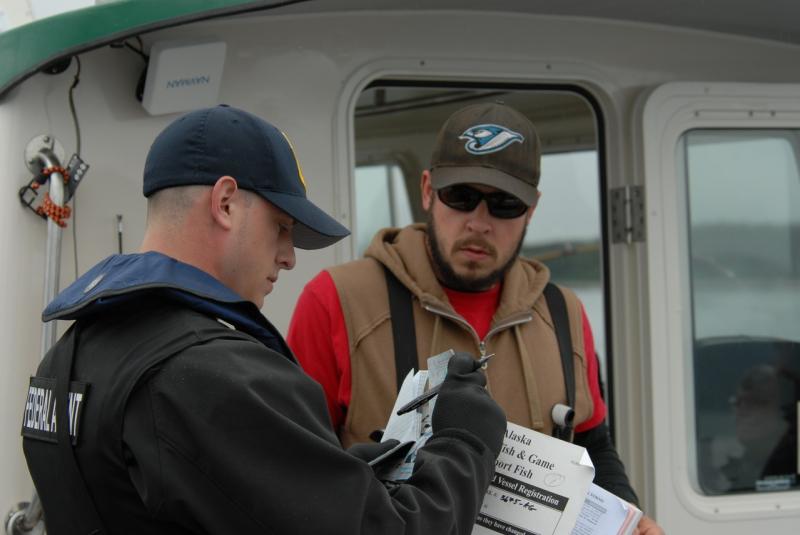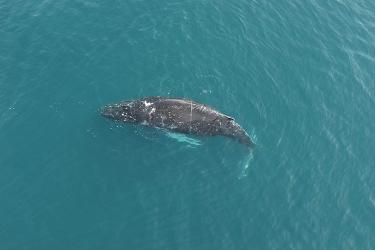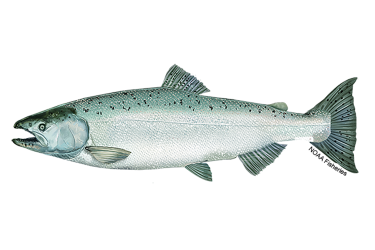Charter halibut fishing is an experience that many people look forward to when visiting Alaska. But, there are specific rules and regulations to ensure the sustainability of the species, which, when broken, are subject to enforcement action by NOAA’s Office of Law Enforcement (OLE).
Recently in Juneau, OLE fined a charter owner/operator $9,750 for exceeding the number of anglers allowed by his charter halibut permit (CHP) endorsement. An endorsement on a charter guide’s permit provides the number of anglers a guide may take out fishing at one time. Other violations, addressed by compliance assistance, included failing to have an angler who retained halibut sign the Alaska Department of Fish and Game (ADF&G) Saltwater logbook and misreporting a sportfish guide license number.
“These violations have a significant impact on the regulatory scheme because the guide fundamentally fished without a permit for those anglers who retained halibut over the angler endorsement limit,” said NOAA Enforcement Officer Andrew Hall.
In this case, the owner/operator’s permit endorsement allowed him to take four anglers out fishing. However, on numerous occasions, he took out more than four anglers at one time and allowed them to catch and retain halibut, which was a violation of his permit. On several occasions, he did not accurately report the guide number or account for young anglers who caught halibut in the ADF&G logbook.
Hall explained that these violations go beyond the fisheries management impact. He said that this investigation also highlights biological and economic impacts, as well as unlawfully creating a competitive advantage in the industry and market.
“This is a biological and economic issue because the guide took more fish than permitted and allowed more anglers to fish than he had authorization for,” said Hall. “This particular charter company charges more than $230 per person, per outing, which means there was a financial gain in cheating the system. The subject also gained a competitive advantage because he was keeping more halibut than authorized and was, in essence, removing potential clients from the market that may have fished legally on other guided vessels.”
After Hall concluded his investigation, he forwarded the case package to NOAA’s Office of General Counsel, Enforcement Section (GCES). Upon review, GCES issued a Notice of Violation and Assessment of Administrative Penalty (NOVA) in the amount of $9,750. The case ultimately settled for a reduced fine of $5,450, along with a 24-month probationary period, within which, if another violation occurs, would increase the fine to the full amount.
“Exceeding the angler endorsement violation is not something we see very often, but when we do, it’s a very costly infraction,” said OLE Lt. Bob Marvelle.
The Alaska charter halibut regulations were updated earlier this year – a fact sheet is available online. The regulations, as outlined in the fact sheet, include: a one- and two-fish daily bag limit for southeast Alaska and south-central Alaska, respectively; charter vessel anglers must sign the logbook at the end of the charter vessel fishing trip to verify the number of halibut caught and retained; and anglers are only authorized to use a single line with no more than two hooks attached, or a spear to fish for halibut. Additional regulations may be found online.
In other charter halibut fishing incidents from Alaska, OLE investigated and GCES issued a $900 fine to the owner/operator who allowed clients to retain more fish than authorized by the annual limit; OLE issued an owner/operator a $400 summary settlement for retaining nearly 70-pounds of chunked halibut, which was seized; and OLE issued an operator a $500 summary settlement for submitting inaccurate reports when he failed to have anglers who caught and retained halibut sign the logbook.
“Compliance is the goal,” said Marvelle. “We conduct a lot of outreach and education throughout the year to assist the industry in understanding the rules and regulations. We are always available to answer questions to increase compliance and clarify any confusion.”
To reach NOAA’s Office of Law Enforcement Alaska Division call (907) 586-7225 or contact your local field office. Additional OLE information is available online.




